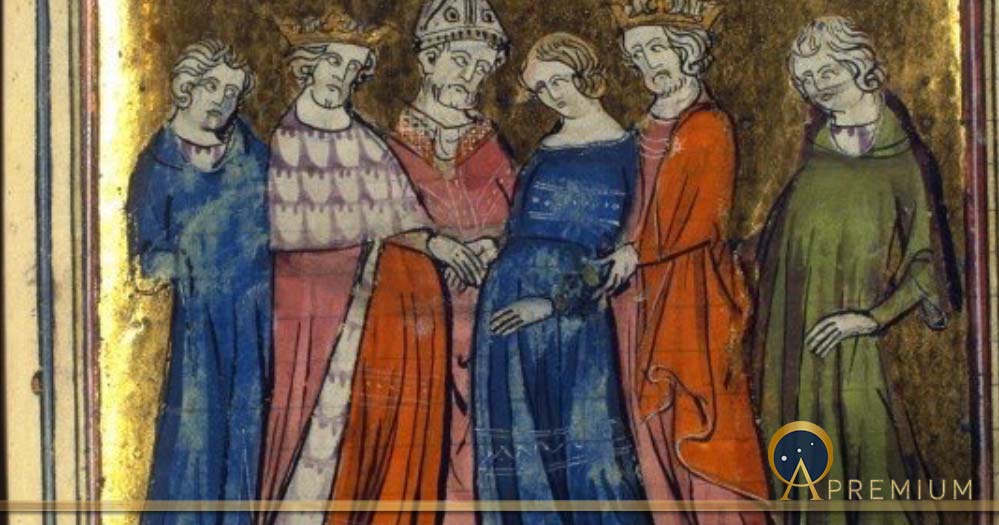King Henry I’s Illegitimate Daughters, Pawns In A Dynastic Strategy
Familial identity and affinity were crucial factors in the establishment of an aristocrat’s social and political contexts, defining to a significant extent their place and interactions within the networks of power in which they existed. These factors derived from the family’s role as a receptacle of wealth. While personal disputes were far from uncommon, a sense of identity and inclusivity in a shared dynastic enterprise necessarily required, and was incentivized by, a stake within the collective fortunes and inheritance portfolio of that family. Marriage was not only the principal mechanism through which these family networks could maintain themselves, but also the means through which they could cultivate and grow other connections and so expand their political and landed interests within wider networks of aristocratic power through a process of consolidation and synthesis.

Depiction of the marriage of the Norman Lord Strongbow to the Irish princess Aoife in Waterford in 1170 by Daniel Maclise (Public Domain)
The Institution of Marriage
The perpetuation and relative inclusivity of the 11th and 12th century aristocratic family, which was composed of an overlapping mesh of landed interests and marriage ties, greatly benefited from the adoption of regulated and legally recognized lines of inheritance. These were formed in reaction to Church reforms and the colonization of the institution of marriage. The growing conception of marriage’s increased permeance promoted and highlighted the importance of maternal lineage as a point of connectivity within aristocratic familial networks. The exploitation of and interaction with these extended networks of affinity, principally through the medium of marriage and as part of a coherent and expansive dynastic strategy, was just as crucial to the success of a 12th-century king of England as it was for the echelons of the lesser aristocracy.

Detail from miniature depicting Richard II, King of England from 1377 to 1399, receiving his child bride Isabella of Valois from her father Charles VI, the King of France (Public domain)
The monarch’s pre-eminence amongst his fellow magnates and the successful application of temporal power and authority was based in large part upon the creation of a shared consensus amongst the aristocracy and the broad alignment of their interests with his own; an entanglement of fortunes that could be readily facilitated through intermarriage. This principle of political solidarity through the establishment of personal accords was made both necessary and more challenging by the politically fragmented nature of the growing Anglo-Norman hegemony.
Like this Preview and want to read on? You can! JOIN US THERE ( with easy, instant access ) and see what you’re missing!! All Premium articles are available in full, with immediate access.
For the price of a cup of coffee, you get this and all the other great benefits at Ancient Origins Premium. And - each time you support AO Premium, you support independent thought and writing.
Dr James Turner attended the University of Glasgow before undertaking his doctoral studies at Durham University. James is the author of The Royal Bastards of Twelfth Century England: Power and Blood
Top Image: Marriage of Guinivere (Public Domain)
By: Dr James Turner
















